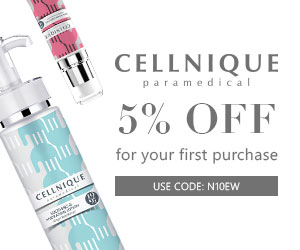Brand Strength = Your Reputation x Your Visibility
Laura Lake (2018) stated that your brand strategy identifies three core components of your business, which can then be used as a blueprint for developing your marketing strategy and tactics. The three core components include:
Purpose: Your business must have a functional and intentional purpose.
Consistency: Without consistency, a business will struggle to survive.
Emotional Impact: Emotion is what helps customers connect with you. A brand strategy helps you develop that emotion.
Brand development is the process of creating and strengthening your professional services brand. As we help firms develop their brands, we divide the process into three phases (Lee Frederiksen, 2018).
The first phase is getting your brand strategy right and aligned with your business objectives (Lee Frederiksen, 2018).
Second is developing all the tools you will need to communicate the brand, such as your logo, tagline and website (Lee Frederiksen, 2018).
Finally, there is the phase of strengthening your newly developed or updated brand (Lee Frederiksen, 2018).
10-Step Brand Development Strategy
1. Decide What You’re Going to Brand.
Are you branding a product, a service, a company, or an individual? (How to Develop a Brand, n.d.)
2. Identify Your Target Clients
Who are your target clients? Our research clearly shows that high growth, high profit firms are focused on having clearly defined target clients. The narrower the focus, the faster the growth. The more diverse the target audience, the more diluted your marketing efforts will be (Lee Frederiksen, 2018).
The key is to get specific. Narrow your audience focus when branding your business provides your business greater competitive advantage. On top of that, you may also first start small with your own branding, and to focus on your target niche audience first. With time, your brand loyalty may grow enough to expand your reach (Sonia Gregory, 2018).
3. Research Your Target Client Group
Firms that do systematic research on their target client group grow faster and are more profitable. Further, those that do research more frequently (at least once per quarter) grow faster still (Lee Frederiksen, 2018).
Research helps you understand your target client’s perspective and priorities, anticipate their needs and put your message in language that resonates with them. It also tells you how they view your firm’s strengths and your current brand (Lee Frederiksen, 2018).
4. Develop Your Brand Objectives & Positioning
Ask yourself two key questions to help determine your brand objectives and positioning. Firstly, what do you want others to know and say about your products or services? (Laura Lake, 2018). Secondly, how is your brand different from others and why should potential clients within your target audience choose to buy from you? (Lee Frederiksen, 2018)
Brand position describes what your organization does and for whom. It also includes the unique value proposition, and promotes aspects of your company/product that lend credibility (Rana Vijaya Pratap Singh, 2016). A positioning statement is typically three to five sentences in length and captures the essence of your brand positioning. It must be grounded in reality, as you will have to deliver on what you promise (Lee Frederiksen, 2018).
5. Develop Your Messaging Strategy
Develop your messaging strategy that translates your brand positioning into messages to your various target audiences. Your target audiences typically include potential clients, potential employees, referral sources or other influencers (Lee Frederiksen, 2018).
While your core brand positioning must be the same for all audiences, each audience will be interested in different aspects of it. The messages to each audience will emphasize the most relevant points. Each audience will also have specific concerns that must be addressed, and each will need different types of evidence to support your messages. Your messaging strategy should address all of these needs (Lee Frederiksen, 2018).
Your brand definition describes what you offer, why you offer it, how your offering is different and better, what unique benefits your customers can count on, and what promise or set of promises you make to all who work with and buy from your business (How to Develop a Brand, n.d.).
If you are a new firm, are undergoing a merger or are burdened with a name that no longer suits your positioning, a name change may be in order. Even if you don’t change your firm name, a new logo and tagline may make sense to better support your brand positioning (Lee Frederiksen, 2018).
Your name, logo and tagline are not your brand. They are ways to communicate or symbolize your brand (Lee Frederiksen, 2018).
Furthermore, your name, logo and tagline must be reflected the mission statement of your business. For example, the Nike tagline is "Just Do It" and its mission is "To bring inspiration and innovation to every athlete in the world". So, you can see the Nike mission everywhere. They focus on all types of athletes using Nike products to be their best self (Sonia Gregory, 2018).
Nike goes even further with their brand mission, by adding a footnote to the statement: “If you have a body, you are an athlete“. Think about how wide their target audience becomes with a disclaimer like that! The company has built up such a reputation and brand following, that they are able to increase their target to accommodate every “body” (Sonia Gregory, 2018).
7. Develop Your Content Marketing Strategy
Content marketing is particularly well suited in the internet age. It does all things traditional marketing does but it does them more efficiently. It uses valuable educational content to attract, nurture and qualify prospects (Lee Frederiksen, 2018).
Remember that your brand strength is driven by both reputation and visibility. Increasing visibility alone, without strengthening your reputation, is rarely successful. That’s why traditional “awareness-building” advertising or sponsorships so often yield disappointing results. On the other hand, content marketing increases both visibility and reputation at the same time. It is also the perfect way to make your brand relevant to your target audiences (Lee Frederiksen, 2018).
8. Develop Your Website
Your website is your single most important brand development tool. It is the place where all your audiences turn to learn what you do, how you do it and who your clients are (Lee Frederiksen, 2018).
Further, your website will be home to your valuable content. That content will become the focus of your search engine optimization (SEO) efforts so that your prospects, potential employees, and referral sources will find you and learn about your firm. Online content is central to any modern brand development strategy (Lee Frederiksen, 2018).
These days, websites are consisted of two parts. The first part is all about branding. This part tells your story and conveys who you are, who you serve, and what you do. In short it conveys your brand message. Another part is played the role of generating and nurturing potential new clients (Lee Frederiksen, 2018).
9. Build Your Marketing Toolkit
The next step in the process is to build out the remainder of your marketing toolkit. This might include one-page “sales sheets” that describe core services offerings or key markets served. In addition, there may be a brief “pitch deck” that overviews the firm or key offerings and an e-brochure about the firm (Lee Frederiksen, 2018).
Increasingly this marketing toolkit also includes videos. Popular video topics include firm overviews, case studies or “meet the partner” videos (Lee Frederiksen, 2018).
10. Implement, Track, and Adjust
Your brand goes public when you unveil your name, logo, and slogan, and when you begin to tell your market the story of how your brand reflects what you stand for (How to Develop a Brand, n.d.).
So as to realign your brand to keep it current, tracking is recommended for both the implementation of the plan as well as results. Did the strategy get implemented as planned? What happened with the objective measures, such as search traffic and web visitors? How many new leads, employee applications and partnering opportunities were generated? Only by tracking the entire process can you make sure you are drawing the right conclusions and making the right adjustments (Lee Frederiksen, 2018).
The Bottom Line
A solid brand building process can transform your business from a small player into a successful competitor. You’ll discover that your customers will develop a deeper level of trust for your brand, and be more likely to purchase what you are selling. Develop a consistent message and visual identity to reinforce your mission. Integrate your brand into every aspect of customer experience: from your storefront to your website, to your personal interactions! (Sonia Gregory, 2018)
Edited by: 浪子
Bibliography
Lee Frederiksen. (2018). A 10 Step Brand Development Strategy for Your Professional Services Firm. Retrieved from
https://hingemarketing.com/blog/story/a_10_step_brand_development_strategy_for_your_professional_services_firm
How to Develop a Brand. (n.d.). Retrieved from
https://www.dummies.com/business/marketing/branding/how-to-develop-a-brand/
Laura Lake. (2018). How to Develop Your Brand Strategy. Retrieved from
https://www.thebalancesmb.com/how-to-develop-your-brand-strategy-2295187
Sonia Gregory. (2018). 11 Simple Steps for a Successful Brand Building Process. Retrieved from
https://freshsparks.com/successful-brand-building-process/
Rana Vijaya Pratap Singh. (2016). 8 Steps for Brand Creation / Brand Development Strategy.
Retrieved from https://www.linkedin.com/pulse/8-steps-brand-creation-development-strategy-rana-vijaya-pratap-singh
Brand Development Strategy
 Reviewed by 浪子
on
September 30, 2018
Rating:
Reviewed by 浪子
on
September 30, 2018
Rating:
 Reviewed by 浪子
on
September 30, 2018
Rating:
Reviewed by 浪子
on
September 30, 2018
Rating:




















